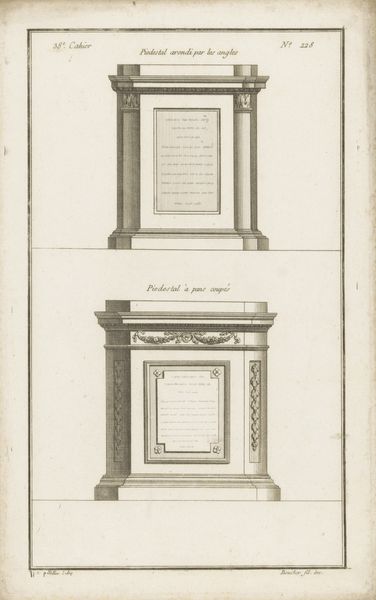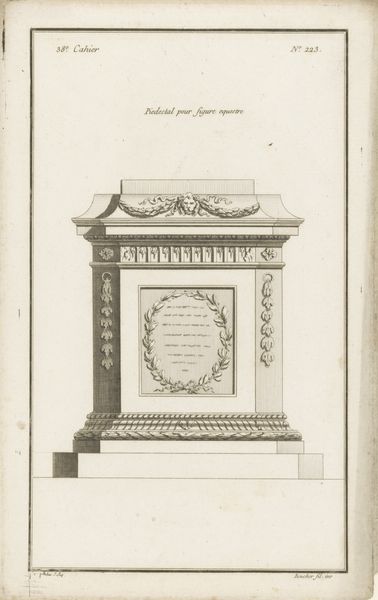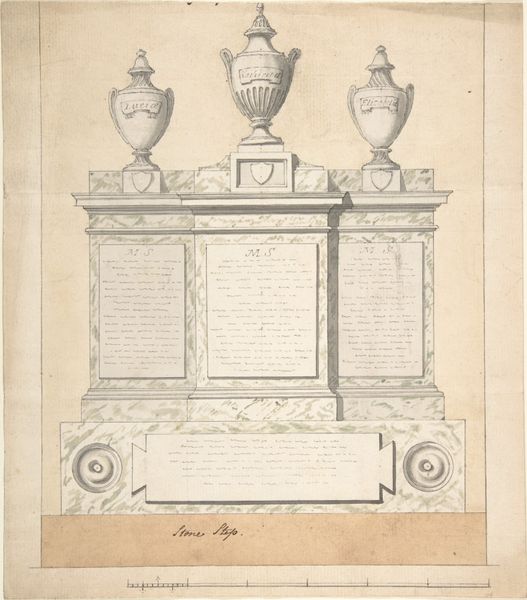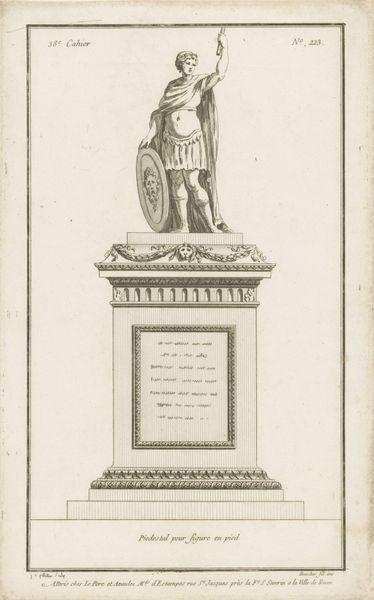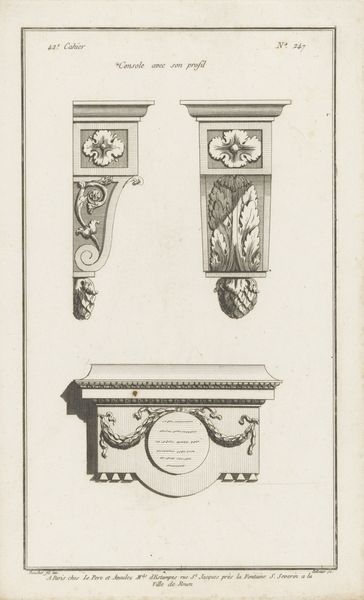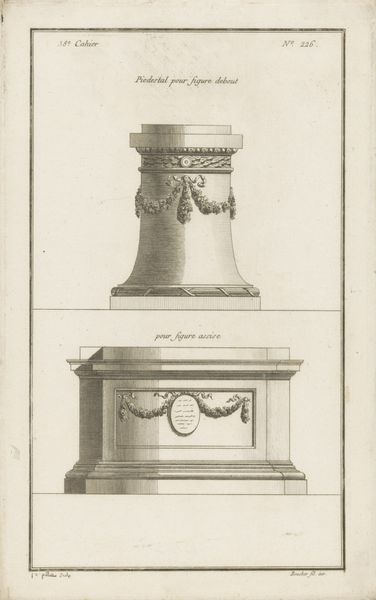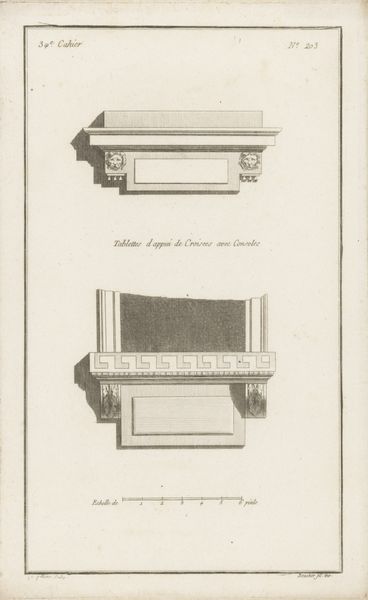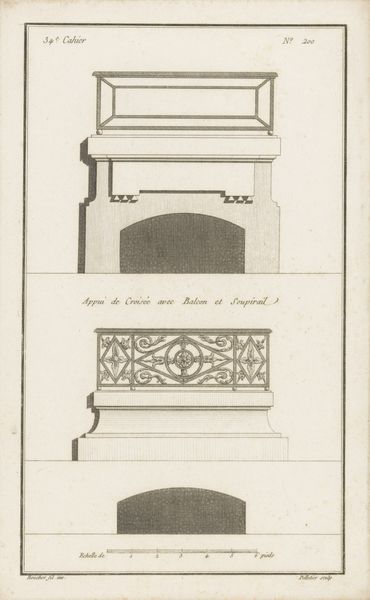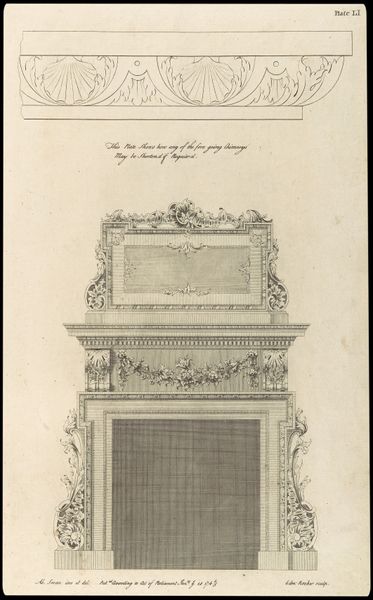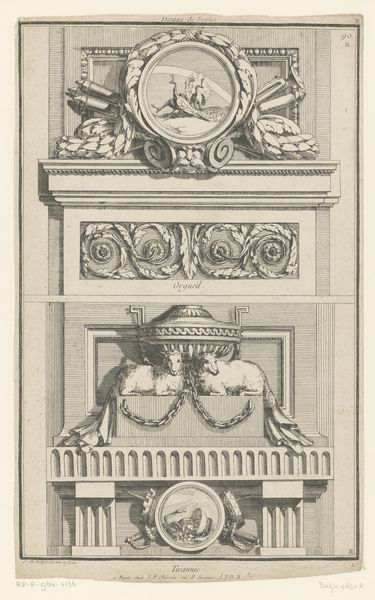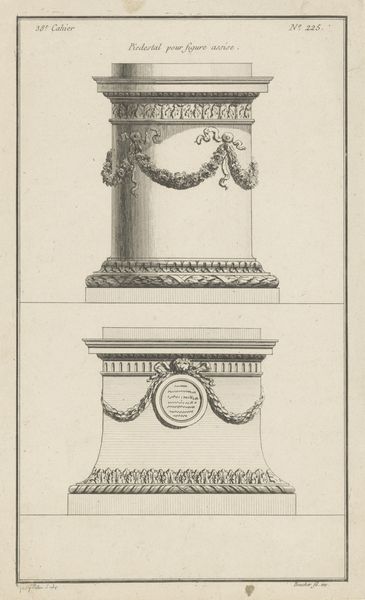
drawing, paper, engraving, architecture
#
drawing
#
neoclacissism
#
aged paper
#
toned paper
#
homemade paper
#
parchment
#
old engraving style
#
classical-realism
#
paper
#
form
#
old-timey
#
geometric
#
19th century
#
line
#
golden font
#
decorative-art
#
engraving
#
architecture
#
historical font
#
columned text
Dimensions: height 331 mm, width 205 mm
Copyright: Rijks Museum: Open Domain
This print by Jean Pelletier presents two pedestal designs, showcasing the prevalent neoclassical style. Dominant is the motif of the wreath, encircling classical figures and adorning the lower pedestal. The wreath, a symbol of victory and eternity, originates from ancient Greece and Rome. We see it gracing the brows of triumphant athletes and emperors, immortalizing their achievements. This symbol wasn’t confined to the classical world; it resurfaced during the Renaissance, and, as we see here, throughout the Neoclassical period, signaling a return to classical ideals. It embodies a yearning for order and harmony, mirroring the cultural anxieties and aspirations of the time. Even today, the wreath persists, not only in celebratory contexts but also in somber memorials, illustrating its enduring power to evoke deep, often conflicting, emotions. This constant recurrence and adaptation reveal the cyclical nature of cultural memory, where symbols are continuously reinterpreted, ensuring their survival.
Comments
No comments
Be the first to comment and join the conversation on the ultimate creative platform.
